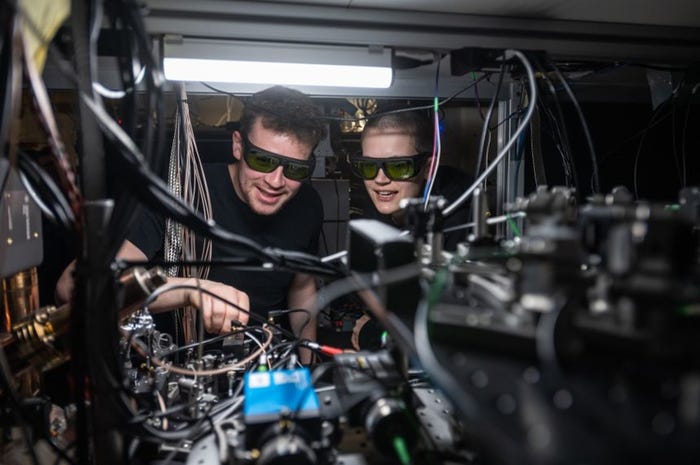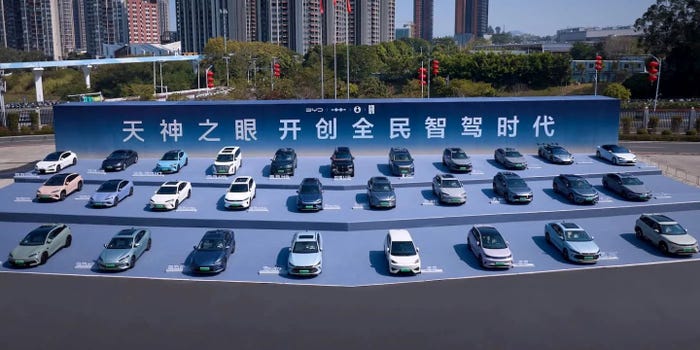IoT Forecasts for 2017: Telecoms, 5G, Networks, Regulation and MoreIoT Forecasts for 2017: Telecoms, 5G, Networks, Regulation and More
Analysys Mason predicts the IoT activity expected in 2017 for telecoms, 5G, networks, spectrum, regulation, connected cars, smart energy and smart cities.
June 8, 2017

By Edward Gately
Telecom operators had a busy year in the Internet of Things market and 2017 promises an even bigger flurry of activity.
Analysys Mason has released its predictions for IoT in 2017, including key developments in low-power, wide-area (LPWA) technologies, connected cars and smart cities.
Operators “may make more bold moves in 2017, as they feel under pressure to grow IoT revenues more quickly,” it said.
Analysys Mason's analysts and consultants outlined their expectations for IoT in 2017:
Telecom operators' strategies for IoT
Telecom operators will be under pressure to grow IoT revenues faster, possibly through acquisitions. Currently, revenue from IoT accounts for less than 1% of most operators’ total revenue. It will take until 2025 for IoT to exceed 5% of operators' total revenue, even starting from 1% and growing by 20% each year, which is roughly in line with current growth rates for operators’ IoT businesses. Senior management may view this as too long a time scale and some operators may explore acquisitions or investments as a result.
5G and IoT
IoT will become less important to 5G. Almost all presentations on 5G mention IoT, but the reverse is not true — few presentations on IoT mention 5G. IoT firms are already developing offerings and are not waiting for the launch of 5G. Massive machine-type connectivity, or IoT, has been one of the key use cases proposed for 5G, but this aspect will receive less attention in 2017. The focus for 5G may instead be on nearer-term use cases, such as high-speed access in the final mile, as proposed by Verizon.
NB-IoT, LoRa and other LPWA network technologies
The first truly commercial NB-IoT networks will be launched. The first customers will be paying for access to NB-IoT networks in 2017, possibly even in the first quarter.
Heavy promotion of NB-IoT technology is expected. Few outside of the telecom sector are aware of NB-IoT technology and how it can be used, and even some within the sector remain unaware. Lots of activity is expected from both vendors (such as Huawei Technologies Co. Ltd. ) and operators (such as Deutsche Telekom AG (NYSE: DT) and Vodafone Americas ) to raise awareness of the technology among a broader audience.
More unlicensed LPWA and LTE-M networks will coexist in 2017. No announcements have been made on NB-IoT in the United States. AT&T and Verizon have committed to nationwide LTE-M networks, and a number of companies are building LPWA networks in unlicensed bands, most notably Comcast using LoRa.
More fixed operators may build IoT networks. 3GPP technologies (such as NB-IoT and LTE-M) have high barriers to entry, which gives cellular operators an advantage. However, technologies in unlicensed spectrum (such as LoRa) have lower barriers to entry, which opens the market to new competition. Fixed operators in particular have brands, customer bases and other assets to leverage, which may encourage them to compete in this market.
Spectrum and IoT
Spectrum needs for IoT and Radio LANs (RLANs) will increase in prominence. Spectrum requirements will receive more attention, as the industry and regulators determine how to deliver ultra-reliable, ultra-low-latency RLAN and IoT applications. The spectrum required to support particular applications will be an important issue, and any additional requirements for both dedicated spectrum (for intelligent transport, for example) and shared spectrum will be a key debate.
IoT regulation
Regulators will consider increased oversight of IoT. Regulators will almost certainly take a greater interest in IoT, given its increasing importance and recent high-profile distributed denial-of-service (DDoS) attacks. However, the impact of any regulation is likely to be limited in the near term. New regulation will take time, perhaps years, to agree and implement, and millions of potentially vulnerable devices already have been deployed. Players in the IoT industry will strive to agree to frameworks and self-regulate in 2017 to stem the need for imposed regulation.
Connected cars
More talk is expected in 2017 about how the overall transport system can be improved by real-time information from vehicle-to-vehicle (V2V), vehicle-to-infrastructure (V2I) and other types of vehicular communication (V2X). Much of this remains uncertain — the benefits, business case and technology are works in progress. However, developments are expected in 2017 as operators and network vendors attempt to answer these questions, as Vodafone and others have already begun doing.
Smart energy
More utilities will embrace “energy transition” fundamentals and adopt new operational and service models, supported by new technology. Advances in technology have fundamentally changed the economics of providing energy and are disrupting the historical model for distribution through development of the distribution service operator or “on-demand utility” model. More utilities are expected to embrace this new model in 2017.
Smart cities
There will be an increased focus on investment models to support the implementation of citywide energy efficiency systems. Cities represent 78% of global energy demand at present, placing the smart-city concept at the heart of the climate change agenda.
The UN projects that an investment of $53 trillion in city infrastructure and operations is needed by 2035 to achieve the COP 21 objective of holding global average temperature increases below 2° C above pre-industrial levels. New investment models will be critical in transitioning from trials to full-scale smart city operations and this area is expected to attract much attention in 2017.
You May Also Like






